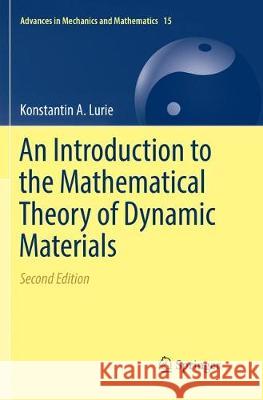An Introduction to the Mathematical Theory of Dynamic Materials » książka
topmenu
An Introduction to the Mathematical Theory of Dynamic Materials
ISBN-13: 9783319880037 / Angielski / Miękka / 2018 / 277 str.
Kategorie:
Kategorie BISAC:
Wydawca:
Springer
Seria wydawnicza:
Język:
Angielski
ISBN-13:
9783319880037
Rok wydania:
2018
Wydanie:
Softcover Repri
Ilość stron:
277
Oprawa:
Miękka
Wolumenów:
01











